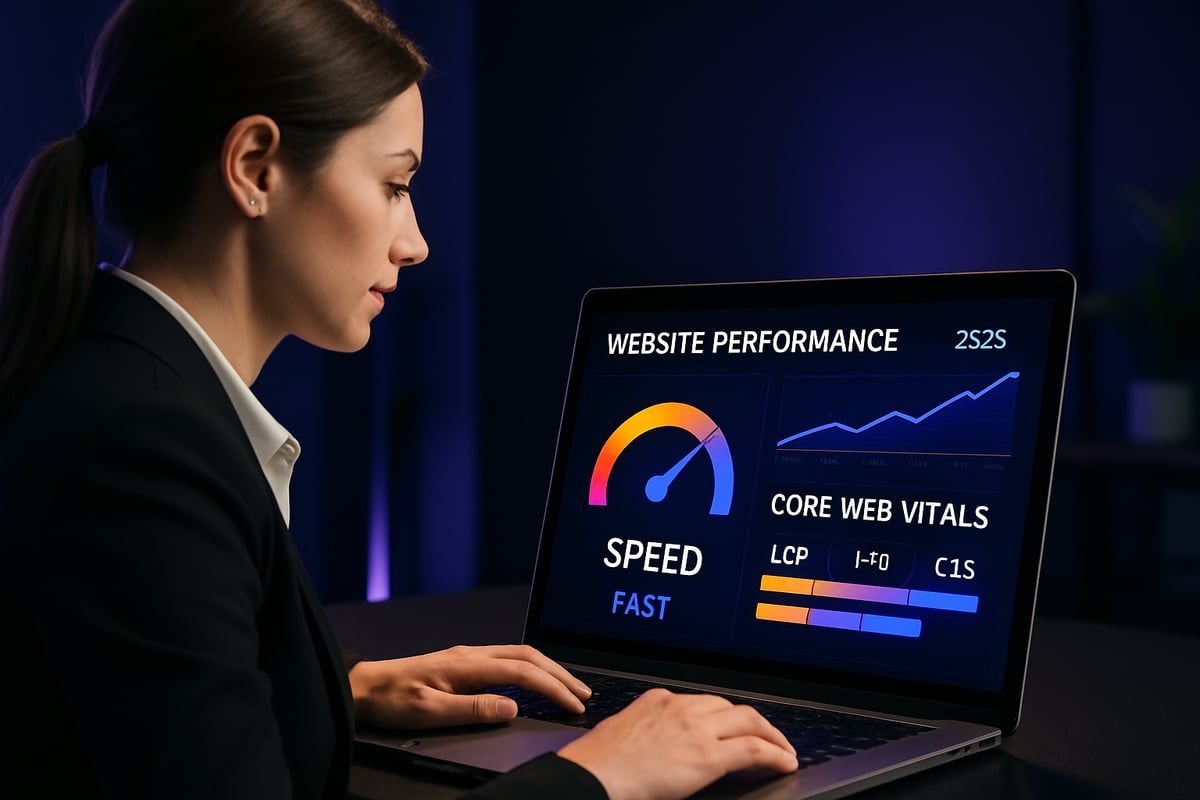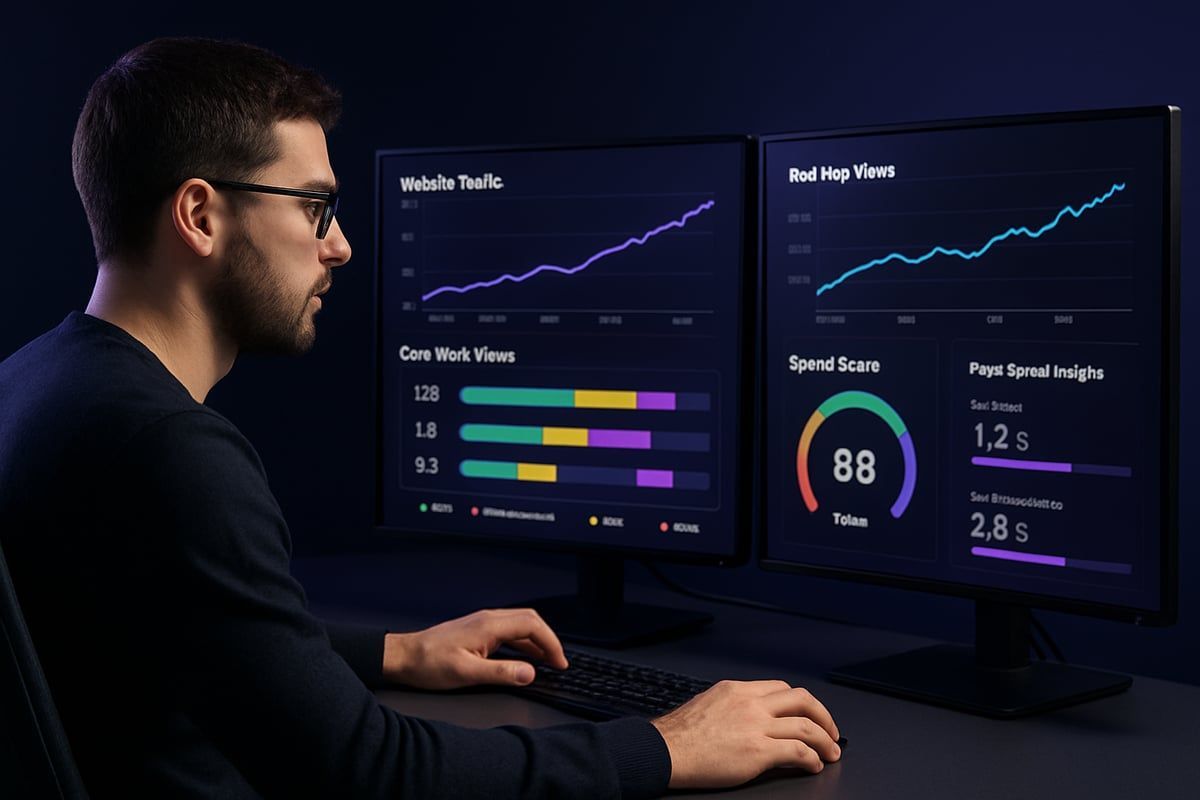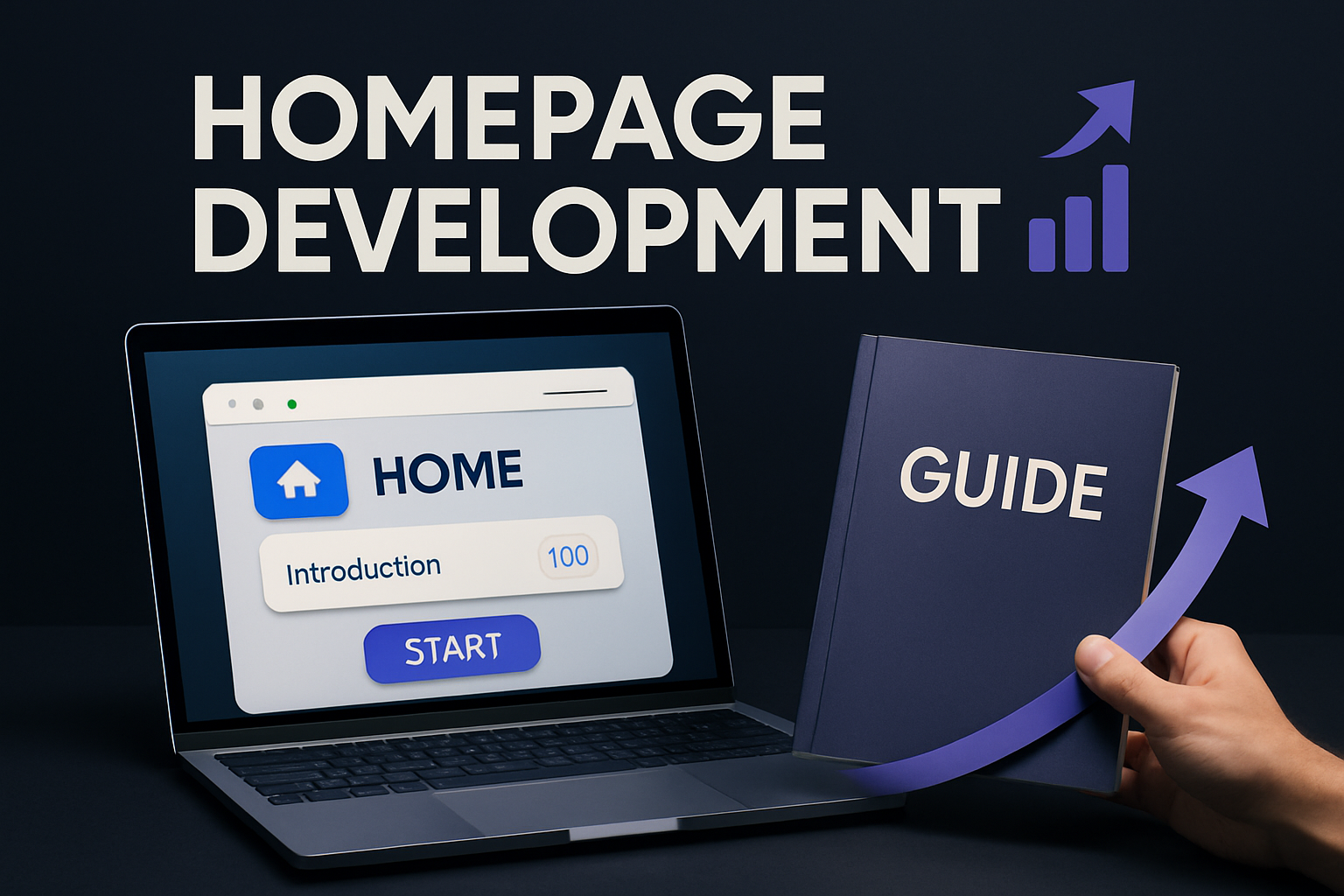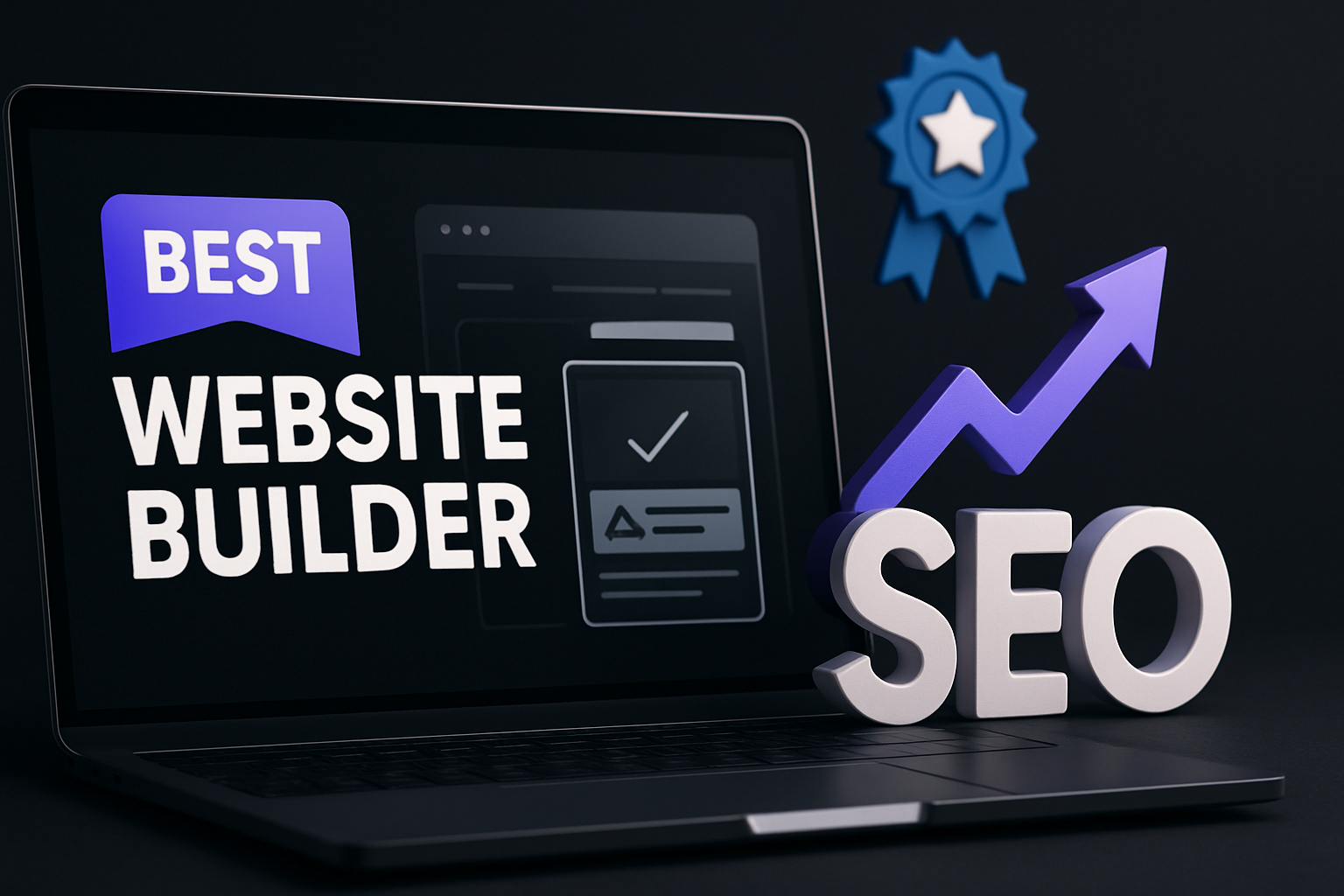7 Proven Ways to Improve Website Performance in 2025
Did you know that in 2025, users leave a slow site in just seconds? Today, if you want to improve website performance, speed is everything for success.
Faster sites mean higher retention, better SEO, and more conversions. Imagine every visitor enjoying an instant, smooth experience on any device.
Ready to take action? In this guide, you’ll discover 7 proven ways to boost your website’s performance and thrive in the competitive digital world.
Why Website Performance Matters in 2025
In 2025, digital audiences have set the bar higher than ever. If you want to improve website outcomes, speed is no longer optional. Users expect pages to load in under three seconds, and any delay can send them straight to a competitor. The pressure is on for businesses to deliver seamless, lightning-fast experiences on every device.
Google has doubled down on performance with Core Web Vitals as a ranking factor. Websites must deliver a Largest Contentful Paint of 2.5 seconds or less, keep First Input Delay under 100 milliseconds, and maintain a minimal Cumulative Layout Shift. These metrics directly influence how search engines rank your site, making it essential to improve website speed and user experience. According to recent studies, website speed has a powerful impact on SEO and user experience, affecting your visibility and organic traffic.
Site speed is not just about technical bragging rights. There’s a direct connection between how quickly your pages load and your bottom line. Slow sites cost businesses real money, as visitors are far less likely to convert if they have to wait. If you improve website load times by just one second, your conversion rates can jump by 7 percent. That difference could determine whether a visitor becomes a loyal customer or leaves your brand behind.
The world has gone mobile-first, with over 60 percent of web traffic now coming from smartphones and tablets. This shift means that to improve website performance, you must optimize for every device and connection speed. Mobile users are often even less patient than desktop visitors, so a slow site can quickly drive them away. Search engines also prioritize mobile-friendly, fast-loading sites in their rankings.
Competitor data tells a clear story. Sites that load quickly enjoy lower bounce rates, higher engagement, and better organic rankings. For example, an eCommerce store that improved website speed by shaving off just a single second saw their sales rise by 7 percent. This kind of real-world impact demonstrates why speed is a critical competitive advantage.
Finally, performance is never a one-and-done effort. Continuous monitoring and experimentation are vital if you want to improve website results over time. Regular audits, testing, and adapting to new standards ensure your site stays ahead in a fast-evolving digital landscape.

How to Measure and Benchmark Your Website’s Performance
Understanding how to measure and benchmark your website’s performance is critical if you want to improve website speed, user experience, and rankings. Without clear data, it is almost impossible to know where you stand or how to make meaningful progress. If your goal is to improve website functionality and keep users engaged, regular performance measurement should be a top priority.

What Metrics Matter Most?
To improve website speed and reliability, you need to track the right metrics. The most important ones in 2025 include:
- Core Web Vitals:
- Largest Contentful Paint (LCP): Measures loading performance.
- First Input Delay (FID): Measures interactivity.
- Cumulative Layout Shift (CLS): Assesses visual stability.
- Time to First Byte (TTFB): How fast your server responds.
- Total Blocking Time (TBT): How long scripts block user interaction.
Here’s a quick reference table for key metrics and their ideal benchmarks:
| Metric | Benchmark (2025) |
|---|---|
| LCP | ≤ 2.5 seconds |
| FID | ≤ 100 ms |
| CLS | ≤ 0.1 |
| TTFB | ≤ 500 ms |
| TBT | ≤ 200 ms |
Keeping these metrics in check is essential if you want to improve website performance and user satisfaction.
Choosing the Right Tools
Selecting the right tools can make it much easier to improve website performance. Popular options include:
- Google PageSpeed Insights: Free, comprehensive, and easy to use.
- Sematext Experience: Offers deep monitoring and real user data.
- Pingdom Tools: Great for uptime and global speed tests.
- GTmetrix: Provides detailed waterfall and performance analysis.
Each tool brings unique strengths. Some focus on real user monitoring (RUM), capturing how actual visitors interact with your site. Others use synthetic monitoring, simulating page loads from various locations and devices. Combining both gives a fuller picture and helps you improve website speed for every visitor.
Benchmarking and Interpreting the Results
Setting performance benchmarks helps you measure progress and improve website outcomes over time. In 2025, a sub-3-second load time is considered competitive. Regularly compare your site’s performance to these benchmarks and to your top competitors.
For deeper insights, review detailed performance reports. Identify which assets or scripts are causing delays. For example, using Sematext Experience can uncover slow-loading images or third-party scripts. For more on evolving benchmarks and their impact on SEO, see Google's Core Web Vitals in 2025.
Continuous Auditing and Taking Action
Improvement is an ongoing process. Conduct regular audits and compare before-and-after results whenever you make changes. Test both desktop and mobile versions, since users expect fast experiences on all devices.
Act on your findings by optimizing slow assets, removing bottlenecks, and applying best practices. Monitor for performance drops after every update or new feature launch. If you want to improve website results and stay ahead in 2025, never stop testing and refining.
7 Proven Ways to Improve Website Performance in 2025
Website owners searching for ways to improve website results in 2025 face more challenges than ever. With user patience running thin and search engines demanding lightning-fast load times, you need strategies that actually work. Below, you'll discover seven proven ways to improve website performance, each packed with actionable steps. These methods help you boost engagement, conversions, and SEO, keeping your site at the top of its game.

1. Optimize and Compress Images
Images are often the heaviest elements on any page, so to improve website speed, start with your visuals. Large, uncompressed images slow everything down, especially for mobile users. The solution? Embrace modern image formats like WebP and AVIF, which offer better compression without sacrificing quality.
Serving responsive images is another best practice. By providing different image sizes for different devices, you ensure that visitors only download what they need. The MDN Responsive Images guide is an excellent resource for this.
Compress your images using tools such as TinyJPG, Squoosh, or built-in CMS features. These can reduce file sizes dramatically. For photos, stick with JPEG; for graphics and icons, PNG is usually best. AVIF and WebP are ideal for balancing quality and size.
Lazy-loading offscreen images means they load only when needed, speeding up the initial page render. Most modern browsers support the
loading="lazy"
attribute on images.
Example: A site that compressed its images saw a 10% speed boost, making a direct impact on both user experience and search rankings. Sites with optimized images consistently improve website performance, ranking higher in search and retaining more visitors.
Here's a quick comparison table:
| Format | Best For | Compression | Browser Support |
|---|---|---|---|
| JPEG | Photos | Good | Universal |
| PNG | Graphics | Lossless | Universal |
| WebP | Both | Excellent | Modern |
| AVIF | Both | Superior | Newest |
By following these steps, you’ll see your improve website efforts pay off with faster load times and better engagement.
2. Minimize and Combine HTTP Requests
Every file your site loads, from CSS and JavaScript to images and fonts, creates a separate HTTP request. Too many requests slow down your site, frustrating visitors. To improve website speed, start by auditing your site for unnecessary plugins, widgets, and third-party scripts. Removing what you don’t need is the fastest win.
Next, combine CSS and JavaScript files whenever possible. This reduces the number of requests the browser must make. Minify your code using tools like UglifyJS or CSSNano to shrink file sizes—just removing whitespace and comments can make a big difference.
Inline your critical CSS directly into the HTML to ensure that above-the-fold content renders quickly. This helps pages appear ready faster, even as other resources load in the background.
Browser developer tools or platforms like Sematext can help you spot bottlenecks. Shifting to HTTP/2 or HTTP/3 protocols enables multiplexing, so your server can send multiple files in a single connection, further reducing delays.
Example: By cutting down HTTP requests, one site managed to improve website load times by several seconds, leading to lower bounce rates and better user satisfaction.
Want to boost your search rankings while speeding up your site? Check out these Website SEO optimization tips for strategies that complement your technical improvements.
3. Implement Content Delivery Networks (CDNs)
A Content Delivery Network (CDN) stores copies of your site’s assets on servers located around the world. When someone visits, the CDN serves files from the closest server, reducing latency and making everything load faster.
Integrating a CDN is simple with most CMS platforms. Major providers offer tools for monitoring and optimizing CDN performance, ensuring you always get the best results. For dynamic sites, look for CDNs that support edge caching and dynamic content acceleration.
Monitor your CDN’s performance with tools like Sematext Experience. This lets you pinpoint issues and fine-tune settings for optimal speed.
Example: After switching to a CDN, Sematext Cloud users worldwide saw significantly reduced load times, especially in regions far from the main server.
Choose a reputable CDN provider with strong security and high uptime. Combine CDN caching with dynamic content strategies to further improve website speed and reliability.
Here are some key CDN benefits:
- Lower latency for global visitors
- Improved uptime and reliability
- Enhanced security features
- Consistent user experience worldwide
Sites that implement CDNs not only improve website performance but also see higher engagement and lower bounce rates.
4. Leverage Browser and Server-Side Caching
Caching is like giving your visitors a shortcut every time they return to your site. By storing frequently accessed files locally, you reduce server load and speed up repeat visits. To improve website speed, use both browser and server-side caching.
Set proper cache-control headers and expiration times for static assets. Most CMS platforms offer plugins or built-in options for managing caching. For example, WordPress users can use plugins like W3 Total Cache or WP Super Cache.
Server-side caching stores entire HTML pages or database queries, so your server doesn’t have to rebuild them every time. This is especially helpful for sites with heavy traffic or resource-intensive pages.
Regularly clear and update your caches to avoid serving outdated content. Combine browser, server, and CDN caching for maximum effect.
Example: A site that implemented robust caching saw its repeat visit load times improve website performance by up to 50 percent.
Here’s a simple code example for setting cache headers in Apache:
<IfModule mod_expires.c>
ExpiresActive On
ExpiresByType image/jpg "access plus 1 year"
ExpiresByType text/css "access plus 1 month"
</IfModule>
With proper caching, you’ll retain more users and boost your SEO.
5. Write and Design for Mobile-First Performance
More than half of all web traffic comes from mobile devices. To improve website results, you must prioritize mobile speed and usability. Start with a responsive design framework that adapts to various screen sizes. Test your site on different devices to make sure everything looks and works as expected.
Optimize touch targets, font sizes, and navigation so users can interact easily, even on small screens. Minimize heavy scripts and large images for mobile visitors. Prioritize loading above-the-fold content first, ensuring that users see something useful immediately.
Example: Sites that improve website loading times on mobile see higher engagement and retention rates. Use Google’s Mobile-Friendly Test and Sematext Experience mobile analytics to identify and fix pain points.
Here are a few mobile-first tips:
- Use flexible grids and layouts
- Avoid pop-ups that block content
- Compress images and assets for mobile
Statistically, mobile-optimized sites outperform desktop-only designs in both search and conversions. The future is mobile, so adapt your design now to improve website outcomes.
6. Streamline and Optimize Code (CSS, JavaScript, HTML)
Bloated code is a hidden enemy when you want to improve website speed. Start by minifying and combining your CSS, JavaScript, and HTML files. Removing unnecessary whitespace, comments, and unused code makes files smaller and faster to load.
Audit your site regularly to find and eliminate third-party scripts you no longer need. Load JavaScript asynchronously or defer non-critical scripts so they don’t block rendering. Modern frameworks like React, Vue, or Svelte often have performance-focused build tools.
Example: After minifying and combining files, some sites cut load times by several seconds, dramatically improving user experience.
Here’s a sample code snippet for deferring JavaScript:
<script src="main.js" defer></script>
Regular performance audits and version control help track changes and spot issues early. Sites with optimized code structure consistently improve website metrics like Total Blocking Time and Core Web Vitals.
A quick table for code optimization tools:
| Task | Tool/Method |
|---|---|
| Minify CSS | CSSNano |
| Minify JS | UglifyJS |
| Audit Code | Lighthouse |
| Remove Bloat | PurgeCSS |
Keep your code clean and efficient to improve website speed and SEO.
7. Continuously Monitor and Test Website Performance
Improving your site is not a one-time task. To truly improve website performance, you need ongoing monitoring and testing. Real User Monitoring (RUM) tools like Sematext and Google Analytics let you see how actual visitors experience your site.
Schedule regular synthetic tests to benchmark your site against competitors. Set up alerts for sudden drops in performance or Core Web Vitals failures. After major updates or new feature launches, always test again to catch new issues.
A/B testing is powerful for measuring the real-world impact of performance changes. Businesses that continually monitor and optimize their sites consistently improve website speed by 20 percent or more over time.
For the latest trends in automation, see how AI in Web Performance Optimization is transforming how sites are monitored and tuned.
Here’s a checklist for ongoing monitoring:
- Track Core Web Vitals
- Set up performance alerts
- Test after every update
- Benchmark against competitors
With continuous monitoring, you can spot problems before they hurt your brand and keep your improve website strategy on track.
The Future of Website Performance: Trends and Technologies to Watch
The future of web is evolving faster than ever. To improve website speed and experience in 2025, you need to keep a close eye on emerging trends and technologies. Staying ahead means adapting quickly to new tools and strategies that can help you improve website performance for every visitor.

Next-Generation Protocols and Infrastructure
Protocols like HTTP/3 and QUIC are becoming mainstream, making it much easier to improve website speed and reliability. These protocols reduce connection times and enhance data transfer, especially for users on mobile or slow networks.
Serverless architectures and edge computing are also transforming how content is delivered. By processing data closer to the user, these technologies can dramatically improve website load times and reduce latency. As more businesses adopt these solutions, the ability to improve website performance globally will become standard practice.
AI-Driven Optimization and Automation
Artificial intelligence is taking center stage in the quest to improve website performance. AI-powered tools can now analyze user behavior, automatically compress images, and adjust code for optimal speed, all without manual intervention.
If you're looking to future-proof your site, consider exploring an AI-powered website assistant. These assistants can help you improve website speed, monitor Core Web Vitals, and even recommend real-time improvements based on changing user needs.
Modern Frameworks and Smarter Resource Loading
The shift toward headless CMS and JAMstack is making it easier than ever to improve website speed. These frameworks serve static content quickly while allowing dynamic features to load only when needed.
Predictive prefetching and intelligent resource loading are also on the rise. By anticipating what users will need next, your site can preload assets and deliver a seamless experience. This proactive approach continues to improve website engagement and satisfaction.
Ongoing Education and Adaptation
To truly improve website performance in 2025 and beyond, continuous learning is critical. Core Web Vitals and SEO best practices will keep evolving, so staying informed is essential.
Webmasters and business owners who adapt quickly will enjoy faster sites, better rankings, and happier users. The digital landscape rewards those who never stop looking for new ways to improve website success.
Ready to put these website performance tips into action? With Avantiy’s AI-powered tools, you don’t need to be a developer to build a lightning-fast, professional site that delights your visitors. You’ve learned how speed, mobile optimization, and smart design can boost your results—now it’s your turn. Easily create your own blog, store, or portfolio, and let Avantiy’s built-in SEO and eCommerce features help you grow online. Why wait weeks when you can launch in hours? Let’s take your website performance to the next level together—Start Building Your Website Today.
Start building your new website today
No credit of debit card required start building today




